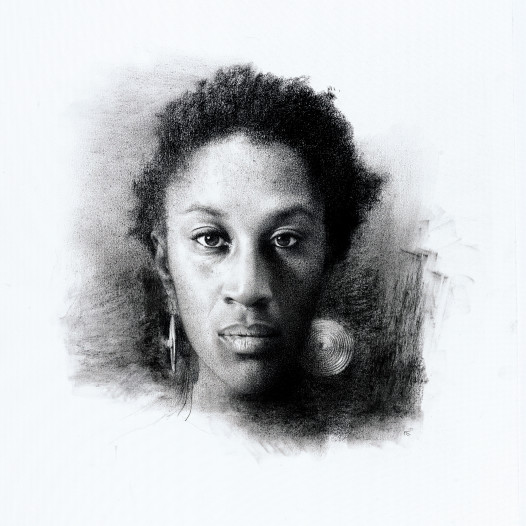Paul Emsley
b. 1947With a meticulous approach and an adept use of chiaroscuro, Paul Emsley has created outstanding conté studies of animals and flowers, and painted the official portraits of illustrious sitters including Nelson Mandela and Catherine, Duchess of Cambridge. Born in Glasgow in 1947, but raised in South Africa, Emsley inititally trained and worked as a graphic designer, teacher, and illustrator, before devoting himself entirely to painting and drawing from 1996 onwards. He was awarded first prize in the BP Portrait Award in 2007 - his winning entry, of his neighbour and fellow painter, Michael Simpson, was unflinching in its painstaking detail, with the wrinkled head of the elderly sitter bathed in an ethereal light. In painting the background black, the head appears to float up and away from his body; this is a compositional device that Emsley frequently employs, and is repeated in most of his portraits. Emsley has said that the crux of his work is “the way in which light and shadow falls across forms”. By manipulating the lighting, the head looms from the darkness with alarming clarity. Thus, although apparently photo-realist, the portraits are not rooted in complete reality. The resulting composition tends to disorientate the viewer, much like Chuck Close’s portraits, which subtly blur in and out of focus. Similarly, Emsley’s portraits of Nelson Mandela - one of which is owned by the Mandela Foundation - appear to be exact reproductions of photographs, but the artist has in fact made minor “aesthetic judgments”, moving an eye and an ear from their original places. This is reminiscent of another American Hyperrealist, Richard Estes, whose landscapes often have one or two details deliberately but minutely altered, with Estes also doctoring the lighting.
In 2013, following a successful portrait of the author Sir VS Naipaul, Emsley was commissioned to paint HRH The Duchess of Cambridge. When unveiled at the National Portrait Gallery, it became one of the most talked-about paintings of this century. Emsley has explained how “on the one hand, I have offended the critics who had expected something rougher and more challenging, and on the other that part of the public who would like something more in keeping with the glamorous images they are used to”. It was never Emsley’s intention, and nor was it appropriate, for it to be an uncompromising, warts-and-all project, like Lucian Freud’s portrait of Queen Elizabeth, for example. Instead, the soft, sfumato surface hints at the sense of mystery enveloping the sitter, and so the portrait arguably says as much about the royal family as it does about our own abiding interest in them. Though he is perhaps best known for his portraiture, Emsley has painted relatively few portraits. This is partly due to the time it takes to complete a portrait - between two and five months - and also to his interest in exploring other subjects and media. He is drawn chiefly to animals, for their “strange beauty” and for their “forms, textures and surfaces”. In his studies, often completed in conté crayon on paper, one marvels at the exquisite details of a warthog’s rough skin; the battle-weary scars and protruding rib-cage of an emaciated lioness; and the shimmering coat of fur on a pet dog. With remarkable realism, and dramatic play of light and dark, these animals become profound, poignant things of wonder. Emsley’s animal studies have won various awards, including First Prize in The Sunday Times Watercolour Competition (2002), and have been shown in the Royal Academy Summer Exhibition.
Paul Emsley is represented by the Redfern Gallery.
Works
-
 Paul EmsleyFlower Drawing (No. 89), 2022Black chalk on paper33.5 x 50 cm%3Cdiv%20class%3D%22artist%22%3E%3Cspan%20class%3D%22artist%22%3E%3Cstrong%3EPaul%20Emsley%3C/strong%3E%3C/span%3E%3C/div%3E%0D%3Cdiv%20class%3D%22title%22%3E%3Cem%3EFlower%20Drawing%20%28No.%2089%29%3C/em%3E%2C%202022%3C/div%3E%0D%3Cdiv%20class%3D%22medium%22%3EBlack%20chalk%20on%20paper%3C/div%3E%0D%3Cdiv%20class%3D%22dimensions%22%3E33.5%20x%2050%20cm%3C/div%3E
Paul EmsleyFlower Drawing (No. 89), 2022Black chalk on paper33.5 x 50 cm%3Cdiv%20class%3D%22artist%22%3E%3Cspan%20class%3D%22artist%22%3E%3Cstrong%3EPaul%20Emsley%3C/strong%3E%3C/span%3E%3C/div%3E%0D%3Cdiv%20class%3D%22title%22%3E%3Cem%3EFlower%20Drawing%20%28No.%2089%29%3C/em%3E%2C%202022%3C/div%3E%0D%3Cdiv%20class%3D%22medium%22%3EBlack%20chalk%20on%20paper%3C/div%3E%0D%3Cdiv%20class%3D%22dimensions%22%3E33.5%20x%2050%20cm%3C/div%3E -
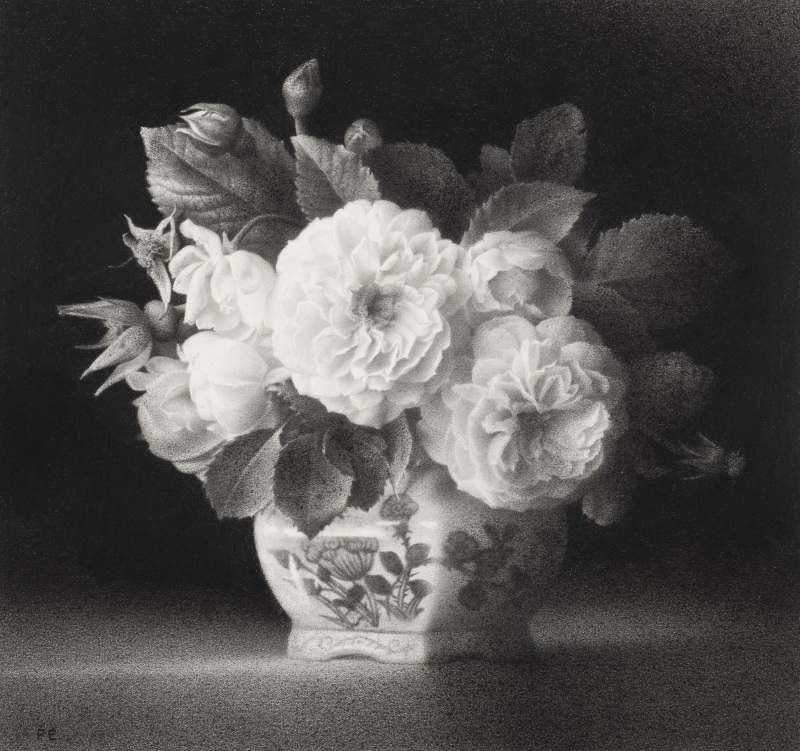 Paul EmsleyFlower Drawing (No. 90), 2022Black chalk on paper29.5 x 32cm%3Cdiv%20class%3D%22artist%22%3E%3Cspan%20class%3D%22artist%22%3E%3Cstrong%3EPaul%20Emsley%3C/strong%3E%3C/span%3E%3C/div%3E%0D%3Cdiv%20class%3D%22title%22%3E%3Cem%3EFlower%20Drawing%20%28No.%2090%29%3C/em%3E%2C%202022%3C/div%3E%0D%3Cdiv%20class%3D%22medium%22%3EBlack%20chalk%20on%20paper%3C/div%3E%0D%3Cdiv%20class%3D%22dimensions%22%3E29.5%20x%2032cm%3C/div%3E
Paul EmsleyFlower Drawing (No. 90), 2022Black chalk on paper29.5 x 32cm%3Cdiv%20class%3D%22artist%22%3E%3Cspan%20class%3D%22artist%22%3E%3Cstrong%3EPaul%20Emsley%3C/strong%3E%3C/span%3E%3C/div%3E%0D%3Cdiv%20class%3D%22title%22%3E%3Cem%3EFlower%20Drawing%20%28No.%2090%29%3C/em%3E%2C%202022%3C/div%3E%0D%3Cdiv%20class%3D%22medium%22%3EBlack%20chalk%20on%20paper%3C/div%3E%0D%3Cdiv%20class%3D%22dimensions%22%3E29.5%20x%2032cm%3C/div%3E -
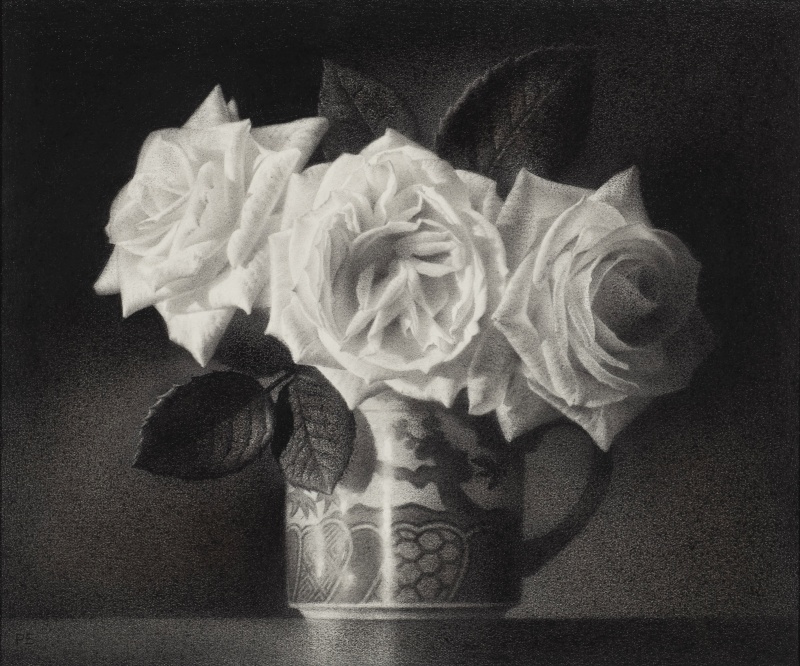 Paul EmsleyFlower Drawing (No. 91), 2022Black chalk on paper23.5 x 28 cm%3Cdiv%20class%3D%22artist%22%3E%3Cspan%20class%3D%22artist%22%3E%3Cstrong%3EPaul%20Emsley%3C/strong%3E%3C/span%3E%3C/div%3E%0D%3Cdiv%20class%3D%22title%22%3E%3Cem%3EFlower%20Drawing%20%28No.%2091%29%3C/em%3E%2C%202022%3C/div%3E%0D%3Cdiv%20class%3D%22medium%22%3EBlack%20chalk%20on%20paper%3C/div%3E%0D%3Cdiv%20class%3D%22dimensions%22%3E23.5%20x%2028%20cm%3C/div%3E
Paul EmsleyFlower Drawing (No. 91), 2022Black chalk on paper23.5 x 28 cm%3Cdiv%20class%3D%22artist%22%3E%3Cspan%20class%3D%22artist%22%3E%3Cstrong%3EPaul%20Emsley%3C/strong%3E%3C/span%3E%3C/div%3E%0D%3Cdiv%20class%3D%22title%22%3E%3Cem%3EFlower%20Drawing%20%28No.%2091%29%3C/em%3E%2C%202022%3C/div%3E%0D%3Cdiv%20class%3D%22medium%22%3EBlack%20chalk%20on%20paper%3C/div%3E%0D%3Cdiv%20class%3D%22dimensions%22%3E23.5%20x%2028%20cm%3C/div%3E -
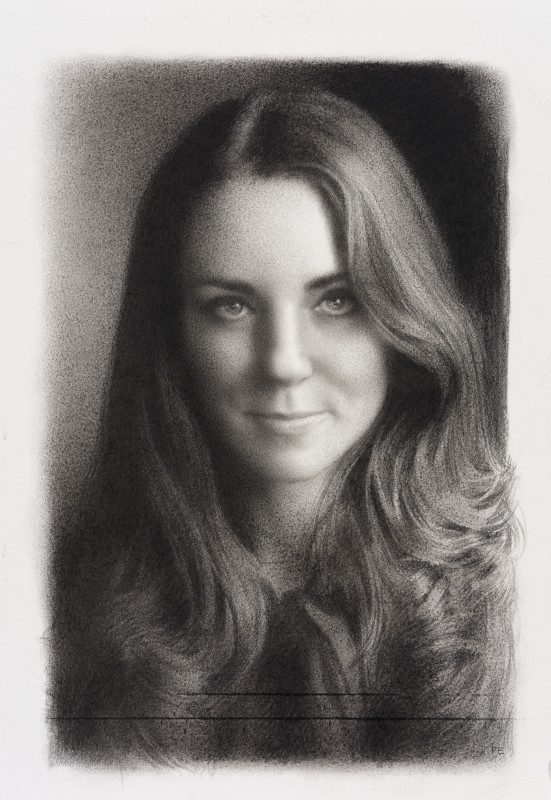 Paul EmsleyCatherine, Princess of Wales, 2017Chalk on paper30 x 21 cmSigned and dated verso%3Cdiv%20class%3D%22artist%22%3E%3Cspan%20class%3D%22artist%22%3E%3Cstrong%3EPaul%20Emsley%3C/strong%3E%3C/span%3E%3C/div%3E%0D%3Cdiv%20class%3D%22title%22%3E%3Cem%3ECatherine%2C%20Princess%20of%20Wales%3C/em%3E%2C%202017%3C/div%3E%0D%3Cdiv%20class%3D%22signed_and_dated%22%3ESigned%20and%20dated%20verso%3C/div%3E%0D%3Cdiv%20class%3D%22medium%22%3EChalk%20on%20paper%3C/div%3E%0D%3Cdiv%20class%3D%22dimensions%22%3E30%20x%2021%20cm%3C/div%3E
Paul EmsleyCatherine, Princess of Wales, 2017Chalk on paper30 x 21 cmSigned and dated verso%3Cdiv%20class%3D%22artist%22%3E%3Cspan%20class%3D%22artist%22%3E%3Cstrong%3EPaul%20Emsley%3C/strong%3E%3C/span%3E%3C/div%3E%0D%3Cdiv%20class%3D%22title%22%3E%3Cem%3ECatherine%2C%20Princess%20of%20Wales%3C/em%3E%2C%202017%3C/div%3E%0D%3Cdiv%20class%3D%22signed_and_dated%22%3ESigned%20and%20dated%20verso%3C/div%3E%0D%3Cdiv%20class%3D%22medium%22%3EChalk%20on%20paper%3C/div%3E%0D%3Cdiv%20class%3D%22dimensions%22%3E30%20x%2021%20cm%3C/div%3E -
 Paul EmsleyGeoffrey Palmer, 2017Chalk on paper79 x 71 cmSigned and dated verso%3Cdiv%20class%3D%22artist%22%3E%3Cspan%20class%3D%22artist%22%3E%3Cstrong%3EPaul%20Emsley%3C/strong%3E%3C/span%3E%3C/div%3E%0D%3Cdiv%20class%3D%22title%22%3E%3Cem%3EGeoffrey%20Palmer%3C/em%3E%2C%202017%3C/div%3E%0D%3Cdiv%20class%3D%22signed_and_dated%22%3ESigned%20and%20dated%20verso%3C/div%3E%0D%3Cdiv%20class%3D%22medium%22%3EChalk%20on%20paper%3C/div%3E%0D%3Cdiv%20class%3D%22dimensions%22%3E79%20x%2071%20cm%3C/div%3E
Paul EmsleyGeoffrey Palmer, 2017Chalk on paper79 x 71 cmSigned and dated verso%3Cdiv%20class%3D%22artist%22%3E%3Cspan%20class%3D%22artist%22%3E%3Cstrong%3EPaul%20Emsley%3C/strong%3E%3C/span%3E%3C/div%3E%0D%3Cdiv%20class%3D%22title%22%3E%3Cem%3EGeoffrey%20Palmer%3C/em%3E%2C%202017%3C/div%3E%0D%3Cdiv%20class%3D%22signed_and_dated%22%3ESigned%20and%20dated%20verso%3C/div%3E%0D%3Cdiv%20class%3D%22medium%22%3EChalk%20on%20paper%3C/div%3E%0D%3Cdiv%20class%3D%22dimensions%22%3E79%20x%2071%20cm%3C/div%3E -
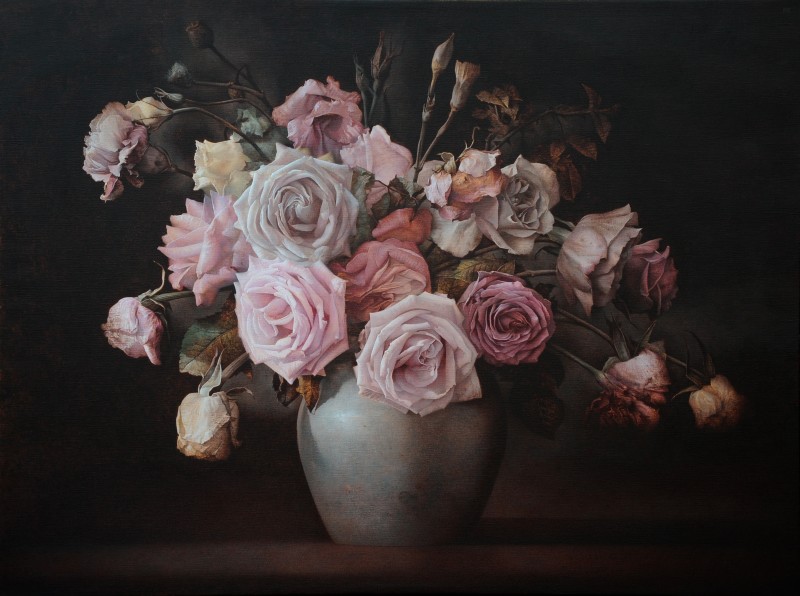 Paul EmsleySpring Island, 2017Acrylic on canvas91 x 122 cmSigned and dated verso%3Cdiv%20class%3D%22artist%22%3E%3Cspan%20class%3D%22artist%22%3E%3Cstrong%3EPaul%20Emsley%3C/strong%3E%3C/span%3E%3C/div%3E%0D%3Cdiv%20class%3D%22title%22%3E%3Cem%3ESpring%20Island%3C/em%3E%2C%202017%3C/div%3E%0D%3Cdiv%20class%3D%22signed_and_dated%22%3ESigned%20and%20dated%20verso%3C/div%3E%0D%3Cdiv%20class%3D%22medium%22%3EAcrylic%20on%20canvas%3C/div%3E%0D%3Cdiv%20class%3D%22dimensions%22%3E91%20x%20122%20cm%3C/div%3E
Paul EmsleySpring Island, 2017Acrylic on canvas91 x 122 cmSigned and dated verso%3Cdiv%20class%3D%22artist%22%3E%3Cspan%20class%3D%22artist%22%3E%3Cstrong%3EPaul%20Emsley%3C/strong%3E%3C/span%3E%3C/div%3E%0D%3Cdiv%20class%3D%22title%22%3E%3Cem%3ESpring%20Island%3C/em%3E%2C%202017%3C/div%3E%0D%3Cdiv%20class%3D%22signed_and_dated%22%3ESigned%20and%20dated%20verso%3C/div%3E%0D%3Cdiv%20class%3D%22medium%22%3EAcrylic%20on%20canvas%3C/div%3E%0D%3Cdiv%20class%3D%22dimensions%22%3E91%20x%20122%20cm%3C/div%3E -
 Paul EmsleyGlacier, 2016Chalk on paper39 x 50 cmSigned and dated verso%3Cdiv%20class%3D%22artist%22%3E%3Cspan%20class%3D%22artist%22%3E%3Cstrong%3EPaul%20Emsley%3C/strong%3E%3C/span%3E%3C/div%3E%0D%3Cdiv%20class%3D%22title%22%3E%3Cem%3EGlacier%3C/em%3E%2C%202016%3C/div%3E%0D%3Cdiv%20class%3D%22signed_and_dated%22%3ESigned%20and%20dated%20verso%3C/div%3E%0D%3Cdiv%20class%3D%22medium%22%3EChalk%20on%20paper%3C/div%3E%0D%3Cdiv%20class%3D%22dimensions%22%3E39%20x%2050%20cm%3C/div%3E
Paul EmsleyGlacier, 2016Chalk on paper39 x 50 cmSigned and dated verso%3Cdiv%20class%3D%22artist%22%3E%3Cspan%20class%3D%22artist%22%3E%3Cstrong%3EPaul%20Emsley%3C/strong%3E%3C/span%3E%3C/div%3E%0D%3Cdiv%20class%3D%22title%22%3E%3Cem%3EGlacier%3C/em%3E%2C%202016%3C/div%3E%0D%3Cdiv%20class%3D%22signed_and_dated%22%3ESigned%20and%20dated%20verso%3C/div%3E%0D%3Cdiv%20class%3D%22medium%22%3EChalk%20on%20paper%3C/div%3E%0D%3Cdiv%20class%3D%22dimensions%22%3E39%20x%2050%20cm%3C/div%3E -
 Paul EmsleyTerracotta, 2016Acrylic on conservation board19 x 23 cmSigned and dated verso%3Cdiv%20class%3D%22artist%22%3E%3Cspan%20class%3D%22artist%22%3E%3Cstrong%3EPaul%20Emsley%3C/strong%3E%3C/span%3E%3C/div%3E%0D%3Cdiv%20class%3D%22title%22%3E%3Cem%3ETerracotta%3C/em%3E%2C%202016%3C/div%3E%0D%3Cdiv%20class%3D%22signed_and_dated%22%3ESigned%20and%20dated%20verso%3C/div%3E%0D%3Cdiv%20class%3D%22medium%22%3EAcrylic%20on%20conservation%20board%3C/div%3E%0D%3Cdiv%20class%3D%22dimensions%22%3E19%20x%2023%20cm%3C/div%3E
Paul EmsleyTerracotta, 2016Acrylic on conservation board19 x 23 cmSigned and dated verso%3Cdiv%20class%3D%22artist%22%3E%3Cspan%20class%3D%22artist%22%3E%3Cstrong%3EPaul%20Emsley%3C/strong%3E%3C/span%3E%3C/div%3E%0D%3Cdiv%20class%3D%22title%22%3E%3Cem%3ETerracotta%3C/em%3E%2C%202016%3C/div%3E%0D%3Cdiv%20class%3D%22signed_and_dated%22%3ESigned%20and%20dated%20verso%3C/div%3E%0D%3Cdiv%20class%3D%22medium%22%3EAcrylic%20on%20conservation%20board%3C/div%3E%0D%3Cdiv%20class%3D%22dimensions%22%3E19%20x%2023%20cm%3C/div%3E -
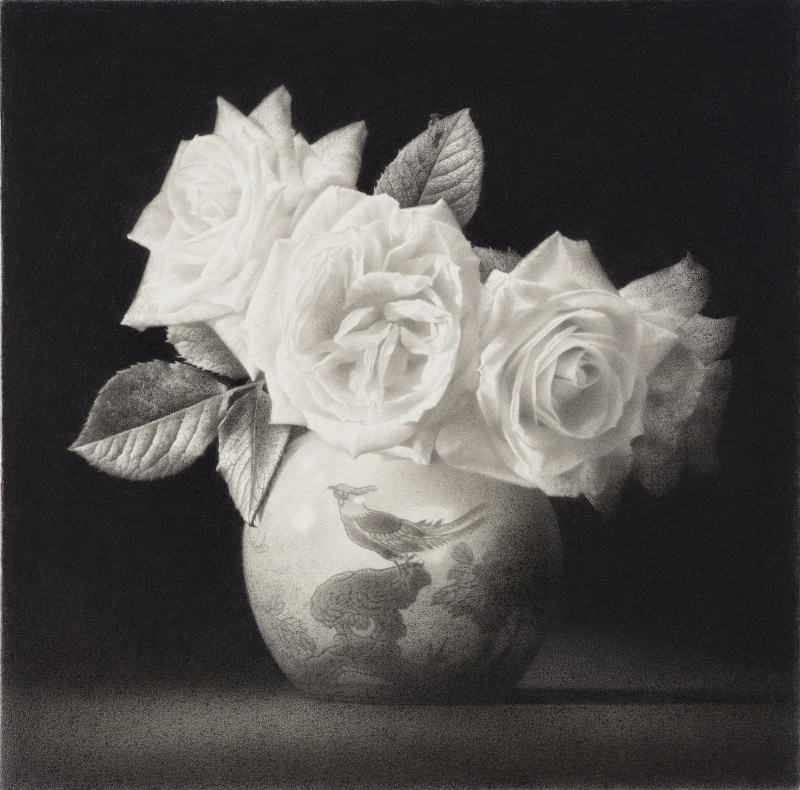 Paul EmsleyThe China Garden, 2016Chalk on paper39 x 39 cmSigned and dated verso%3Cdiv%20class%3D%22artist%22%3E%3Cspan%20class%3D%22artist%22%3E%3Cstrong%3EPaul%20Emsley%3C/strong%3E%3C/span%3E%3C/div%3E%0D%3Cdiv%20class%3D%22title%22%3E%3Cem%3EThe%20China%20Garden%3C/em%3E%2C%202016%3C/div%3E%0D%3Cdiv%20class%3D%22signed_and_dated%22%3ESigned%20and%20dated%20verso%3C/div%3E%0D%3Cdiv%20class%3D%22medium%22%3EChalk%20on%20paper%3C/div%3E%0D%3Cdiv%20class%3D%22dimensions%22%3E39%20x%2039%20cm%3C/div%3E
Paul EmsleyThe China Garden, 2016Chalk on paper39 x 39 cmSigned and dated verso%3Cdiv%20class%3D%22artist%22%3E%3Cspan%20class%3D%22artist%22%3E%3Cstrong%3EPaul%20Emsley%3C/strong%3E%3C/span%3E%3C/div%3E%0D%3Cdiv%20class%3D%22title%22%3E%3Cem%3EThe%20China%20Garden%3C/em%3E%2C%202016%3C/div%3E%0D%3Cdiv%20class%3D%22signed_and_dated%22%3ESigned%20and%20dated%20verso%3C/div%3E%0D%3Cdiv%20class%3D%22medium%22%3EChalk%20on%20paper%3C/div%3E%0D%3Cdiv%20class%3D%22dimensions%22%3E39%20x%2039%20cm%3C/div%3E -
 Paul EmsleyWilliam Boyd, 2016Acrylic on conservation board21 x 22 cmSigned and dated verso%3Cdiv%20class%3D%22artist%22%3E%3Cspan%20class%3D%22artist%22%3E%3Cstrong%3EPaul%20Emsley%3C/strong%3E%3C/span%3E%3C/div%3E%0D%3Cdiv%20class%3D%22title%22%3E%3Cem%3EWilliam%20Boyd%3C/em%3E%2C%202016%3C/div%3E%0D%3Cdiv%20class%3D%22signed_and_dated%22%3ESigned%20and%20dated%20verso%3C/div%3E%0D%3Cdiv%20class%3D%22medium%22%3EAcrylic%20on%20conservation%20board%3C/div%3E%0D%3Cdiv%20class%3D%22dimensions%22%3E21%20x%2022%20cm%3C/div%3E
Paul EmsleyWilliam Boyd, 2016Acrylic on conservation board21 x 22 cmSigned and dated verso%3Cdiv%20class%3D%22artist%22%3E%3Cspan%20class%3D%22artist%22%3E%3Cstrong%3EPaul%20Emsley%3C/strong%3E%3C/span%3E%3C/div%3E%0D%3Cdiv%20class%3D%22title%22%3E%3Cem%3EWilliam%20Boyd%3C/em%3E%2C%202016%3C/div%3E%0D%3Cdiv%20class%3D%22signed_and_dated%22%3ESigned%20and%20dated%20verso%3C/div%3E%0D%3Cdiv%20class%3D%22medium%22%3EAcrylic%20on%20conservation%20board%3C/div%3E%0D%3Cdiv%20class%3D%22dimensions%22%3E21%20x%2022%20cm%3C/div%3E -
 Paul EmsleyFaces of London (No. 7), 2015Chalk on paper34 x 34 cmSigned and dated verso%3Cdiv%20class%3D%22artist%22%3E%3Cspan%20class%3D%22artist%22%3E%3Cstrong%3EPaul%20Emsley%3C/strong%3E%3C/span%3E%3C/div%3E%0D%3Cdiv%20class%3D%22title%22%3E%3Cem%3EFaces%20of%20London%20%28No.%207%29%3C/em%3E%2C%202015%3C/div%3E%0D%3Cdiv%20class%3D%22signed_and_dated%22%3ESigned%20and%20dated%20verso%3C/div%3E%0D%3Cdiv%20class%3D%22medium%22%3EChalk%20on%20paper%3C/div%3E%0D%3Cdiv%20class%3D%22dimensions%22%3E34%20x%2034%20cm%3C/div%3E
Paul EmsleyFaces of London (No. 7), 2015Chalk on paper34 x 34 cmSigned and dated verso%3Cdiv%20class%3D%22artist%22%3E%3Cspan%20class%3D%22artist%22%3E%3Cstrong%3EPaul%20Emsley%3C/strong%3E%3C/span%3E%3C/div%3E%0D%3Cdiv%20class%3D%22title%22%3E%3Cem%3EFaces%20of%20London%20%28No.%207%29%3C/em%3E%2C%202015%3C/div%3E%0D%3Cdiv%20class%3D%22signed_and_dated%22%3ESigned%20and%20dated%20verso%3C/div%3E%0D%3Cdiv%20class%3D%22medium%22%3EChalk%20on%20paper%3C/div%3E%0D%3Cdiv%20class%3D%22dimensions%22%3E34%20x%2034%20cm%3C/div%3E -
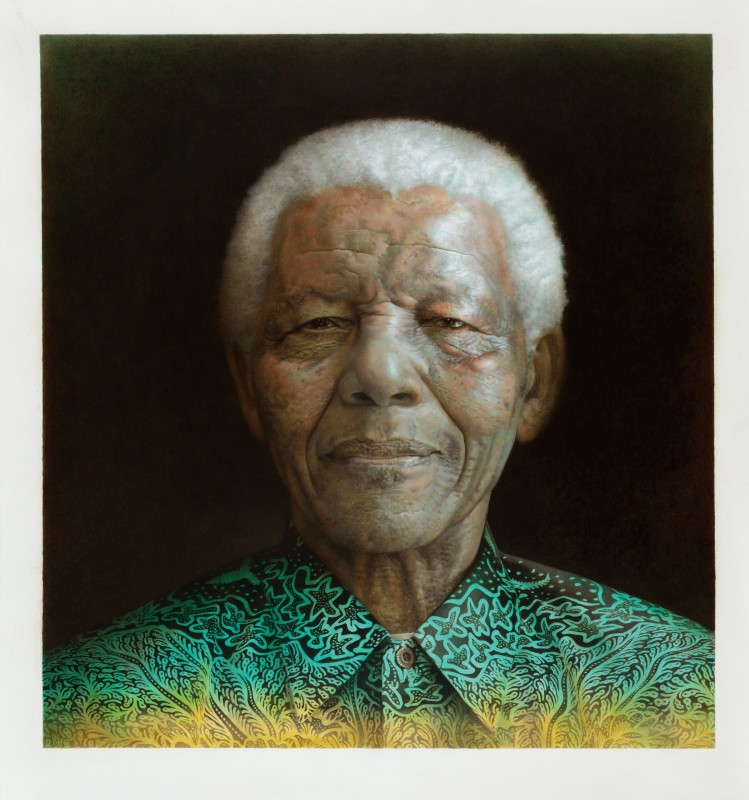 Paul EmsleyNelson Mandela, 2015Acrylic on paper91 x 86 cmSigned and dated verso%3Cdiv%20class%3D%22artist%22%3E%3Cspan%20class%3D%22artist%22%3E%3Cstrong%3EPaul%20Emsley%3C/strong%3E%3C/span%3E%3C/div%3E%0D%3Cdiv%20class%3D%22title%22%3E%3Cem%3ENelson%20Mandela%3C/em%3E%2C%202015%3C/div%3E%0D%3Cdiv%20class%3D%22signed_and_dated%22%3ESigned%20and%20dated%20verso%3C/div%3E%0D%3Cdiv%20class%3D%22medium%22%3EAcrylic%20on%20paper%3C/div%3E%0D%3Cdiv%20class%3D%22dimensions%22%3E91%20x%2086%20cm%3C/div%3E
Paul EmsleyNelson Mandela, 2015Acrylic on paper91 x 86 cmSigned and dated verso%3Cdiv%20class%3D%22artist%22%3E%3Cspan%20class%3D%22artist%22%3E%3Cstrong%3EPaul%20Emsley%3C/strong%3E%3C/span%3E%3C/div%3E%0D%3Cdiv%20class%3D%22title%22%3E%3Cem%3ENelson%20Mandela%3C/em%3E%2C%202015%3C/div%3E%0D%3Cdiv%20class%3D%22signed_and_dated%22%3ESigned%20and%20dated%20verso%3C/div%3E%0D%3Cdiv%20class%3D%22medium%22%3EAcrylic%20on%20paper%3C/div%3E%0D%3Cdiv%20class%3D%22dimensions%22%3E91%20x%2086%20cm%3C/div%3E -
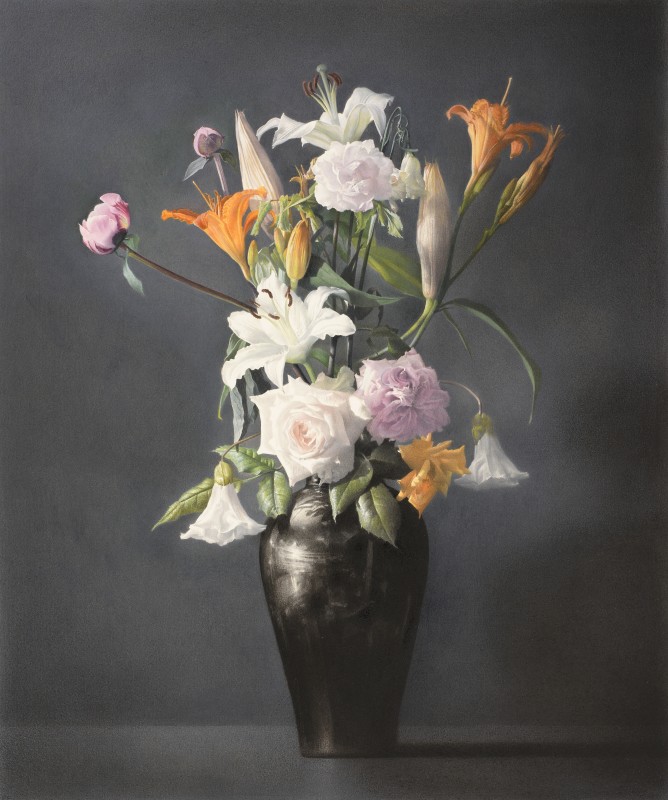 Paul EmsleyReminiscence, 2015Coloured chalk on paper41 x 35 cmSigned and dated verso%3Cdiv%20class%3D%22artist%22%3E%3Cspan%20class%3D%22artist%22%3E%3Cstrong%3EPaul%20Emsley%3C/strong%3E%3C/span%3E%3C/div%3E%0D%3Cdiv%20class%3D%22title%22%3E%3Cem%3EReminiscence%3C/em%3E%2C%202015%3C/div%3E%0D%3Cdiv%20class%3D%22signed_and_dated%22%3ESigned%20and%20dated%20verso%3C/div%3E%0D%3Cdiv%20class%3D%22medium%22%3EColoured%20chalk%20on%20paper%3C/div%3E%0D%3Cdiv%20class%3D%22dimensions%22%3E41%20x%2035%20cm%3C/div%3E
Paul EmsleyReminiscence, 2015Coloured chalk on paper41 x 35 cmSigned and dated verso%3Cdiv%20class%3D%22artist%22%3E%3Cspan%20class%3D%22artist%22%3E%3Cstrong%3EPaul%20Emsley%3C/strong%3E%3C/span%3E%3C/div%3E%0D%3Cdiv%20class%3D%22title%22%3E%3Cem%3EReminiscence%3C/em%3E%2C%202015%3C/div%3E%0D%3Cdiv%20class%3D%22signed_and_dated%22%3ESigned%20and%20dated%20verso%3C/div%3E%0D%3Cdiv%20class%3D%22medium%22%3EColoured%20chalk%20on%20paper%3C/div%3E%0D%3Cdiv%20class%3D%22dimensions%22%3E41%20x%2035%20cm%3C/div%3E -
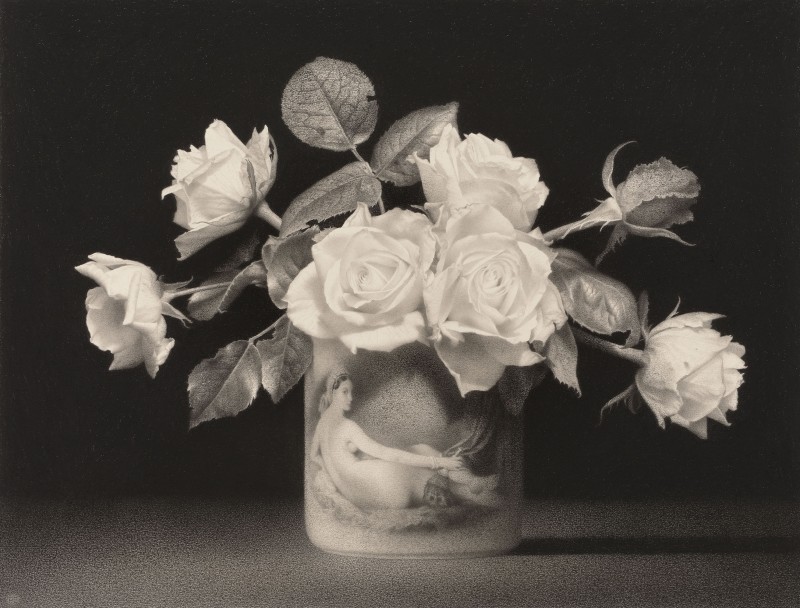 Paul EmsleyRomanticism, 2015Chalk on paper40 x 52 cmSigned and dated verso%3Cdiv%20class%3D%22artist%22%3E%3Cspan%20class%3D%22artist%22%3E%3Cstrong%3EPaul%20Emsley%3C/strong%3E%3C/span%3E%3C/div%3E%0D%3Cdiv%20class%3D%22title%22%3E%3Cem%3ERomanticism%3C/em%3E%2C%202015%3C/div%3E%0D%3Cdiv%20class%3D%22signed_and_dated%22%3ESigned%20and%20dated%20verso%3C/div%3E%0D%3Cdiv%20class%3D%22medium%22%3EChalk%20on%20paper%3C/div%3E%0D%3Cdiv%20class%3D%22dimensions%22%3E40%20x%2052%20cm%3C/div%3E
Paul EmsleyRomanticism, 2015Chalk on paper40 x 52 cmSigned and dated verso%3Cdiv%20class%3D%22artist%22%3E%3Cspan%20class%3D%22artist%22%3E%3Cstrong%3EPaul%20Emsley%3C/strong%3E%3C/span%3E%3C/div%3E%0D%3Cdiv%20class%3D%22title%22%3E%3Cem%3ERomanticism%3C/em%3E%2C%202015%3C/div%3E%0D%3Cdiv%20class%3D%22signed_and_dated%22%3ESigned%20and%20dated%20verso%3C/div%3E%0D%3Cdiv%20class%3D%22medium%22%3EChalk%20on%20paper%3C/div%3E%0D%3Cdiv%20class%3D%22dimensions%22%3E40%20x%2052%20cm%3C/div%3E -
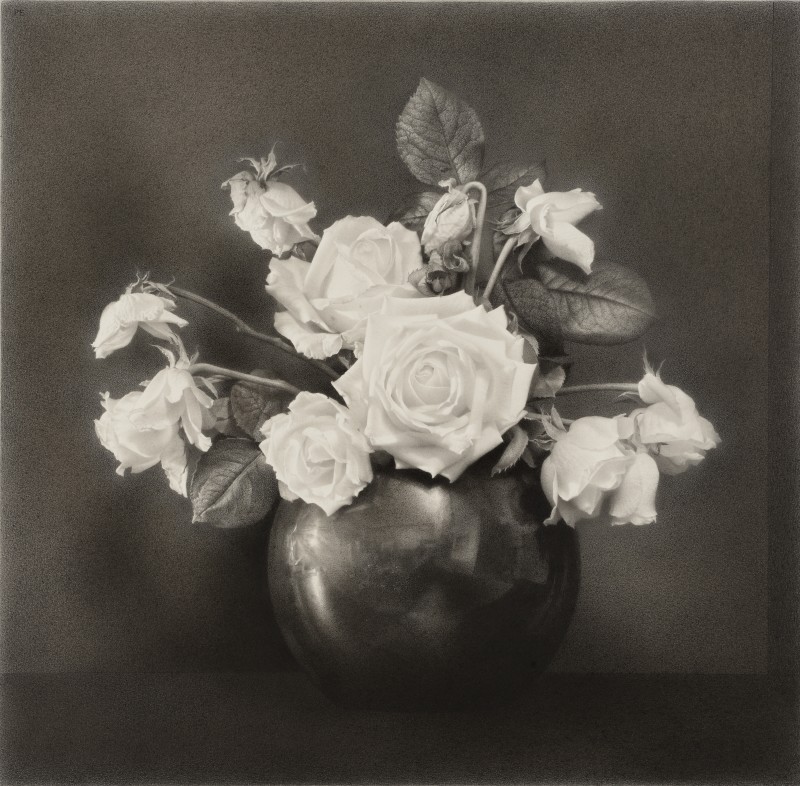 Paul EmsleyThe Far Side, 2015Chalk on paper48 x 49 cmSigned and dated verso%3Cdiv%20class%3D%22artist%22%3E%3Cspan%20class%3D%22artist%22%3E%3Cstrong%3EPaul%20Emsley%3C/strong%3E%3C/span%3E%3C/div%3E%0D%3Cdiv%20class%3D%22title%22%3E%3Cem%3EThe%20Far%20Side%3C/em%3E%2C%202015%3C/div%3E%0D%3Cdiv%20class%3D%22signed_and_dated%22%3ESigned%20and%20dated%20verso%3C/div%3E%0D%3Cdiv%20class%3D%22medium%22%3EChalk%20on%20paper%3C/div%3E%0D%3Cdiv%20class%3D%22dimensions%22%3E48%20x%2049%20cm%3C/div%3E
Paul EmsleyThe Far Side, 2015Chalk on paper48 x 49 cmSigned and dated verso%3Cdiv%20class%3D%22artist%22%3E%3Cspan%20class%3D%22artist%22%3E%3Cstrong%3EPaul%20Emsley%3C/strong%3E%3C/span%3E%3C/div%3E%0D%3Cdiv%20class%3D%22title%22%3E%3Cem%3EThe%20Far%20Side%3C/em%3E%2C%202015%3C/div%3E%0D%3Cdiv%20class%3D%22signed_and_dated%22%3ESigned%20and%20dated%20verso%3C/div%3E%0D%3Cdiv%20class%3D%22medium%22%3EChalk%20on%20paper%3C/div%3E%0D%3Cdiv%20class%3D%22dimensions%22%3E48%20x%2049%20cm%3C/div%3E -
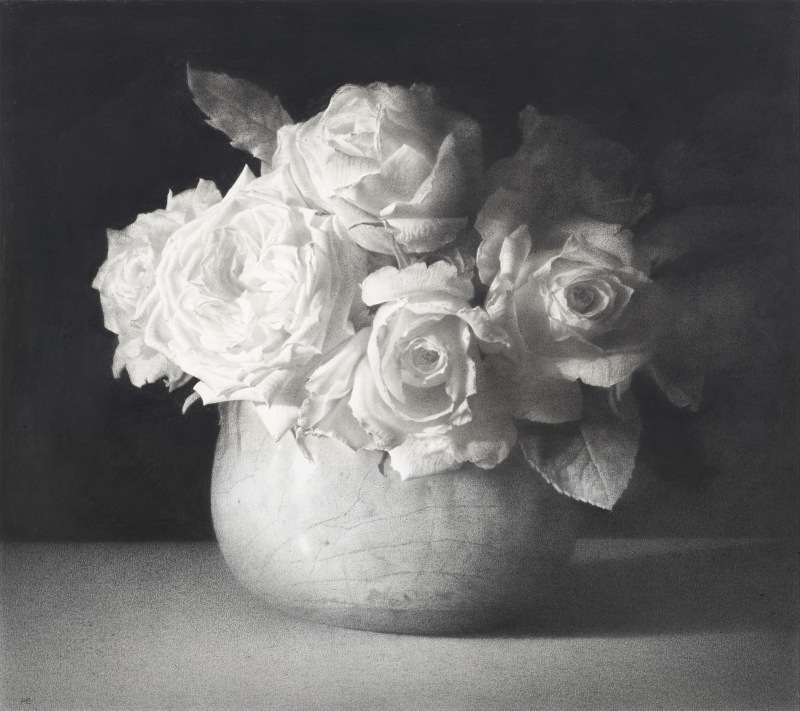 Paul EmsleyWhite Roses in a Bowl, 2009Chalk and conte61 x 69 cm%3Cdiv%20class%3D%22artist%22%3E%3Cspan%20class%3D%22artist%22%3E%3Cstrong%3EPaul%20Emsley%3C/strong%3E%3C/span%3E%3C/div%3E%0D%3Cdiv%20class%3D%22title%22%3E%3Cem%3EWhite%20Roses%20in%20a%20Bowl%3C/em%3E%2C%202009%3C/div%3E%0D%3Cdiv%20class%3D%22medium%22%3EChalk%20and%20conte%3C/div%3E%0D%3Cdiv%20class%3D%22dimensions%22%3E61%20x%2069%20cm%3C/div%3E
Paul EmsleyWhite Roses in a Bowl, 2009Chalk and conte61 x 69 cm%3Cdiv%20class%3D%22artist%22%3E%3Cspan%20class%3D%22artist%22%3E%3Cstrong%3EPaul%20Emsley%3C/strong%3E%3C/span%3E%3C/div%3E%0D%3Cdiv%20class%3D%22title%22%3E%3Cem%3EWhite%20Roses%20in%20a%20Bowl%3C/em%3E%2C%202009%3C/div%3E%0D%3Cdiv%20class%3D%22medium%22%3EChalk%20and%20conte%3C/div%3E%0D%3Cdiv%20class%3D%22dimensions%22%3E61%20x%2069%20cm%3C/div%3E -
 Paul EmsleyMichael Simpson, 2007Oil on canvas138 x 112 cmSigned and dated verso%3Cdiv%20class%3D%22artist%22%3E%3Cspan%20class%3D%22artist%22%3E%3Cstrong%3EPaul%20Emsley%3C/strong%3E%3C/span%3E%3C/div%3E%0D%3Cdiv%20class%3D%22title%22%3E%3Cem%3EMichael%20Simpson%3C/em%3E%2C%202007%3C/div%3E%0D%3Cdiv%20class%3D%22signed_and_dated%22%3ESigned%20and%20dated%20verso%3C/div%3E%0D%3Cdiv%20class%3D%22medium%22%3EOil%20on%20canvas%3C/div%3E%0D%3Cdiv%20class%3D%22dimensions%22%3E138%20x%20112%20cm%3C/div%3E
Paul EmsleyMichael Simpson, 2007Oil on canvas138 x 112 cmSigned and dated verso%3Cdiv%20class%3D%22artist%22%3E%3Cspan%20class%3D%22artist%22%3E%3Cstrong%3EPaul%20Emsley%3C/strong%3E%3C/span%3E%3C/div%3E%0D%3Cdiv%20class%3D%22title%22%3E%3Cem%3EMichael%20Simpson%3C/em%3E%2C%202007%3C/div%3E%0D%3Cdiv%20class%3D%22signed_and_dated%22%3ESigned%20and%20dated%20verso%3C/div%3E%0D%3Cdiv%20class%3D%22medium%22%3EOil%20on%20canvas%3C/div%3E%0D%3Cdiv%20class%3D%22dimensions%22%3E138%20x%20112%20cm%3C/div%3E -
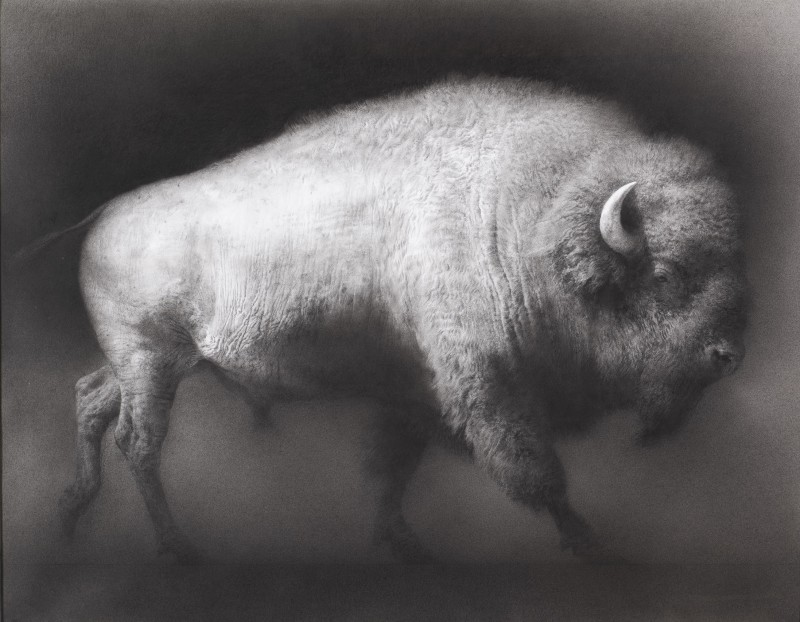 Paul EmsleyBison, 2005Chalk on paper92 x 119 cm%3Cdiv%20class%3D%22artist%22%3E%3Cspan%20class%3D%22artist%22%3E%3Cstrong%3EPaul%20Emsley%3C/strong%3E%3C/span%3E%3C/div%3E%0D%3Cdiv%20class%3D%22title%22%3E%3Cem%3EBison%3C/em%3E%2C%202005%3C/div%3E%0D%3Cdiv%20class%3D%22medium%22%3EChalk%20on%20paper%3C/div%3E%0D%3Cdiv%20class%3D%22dimensions%22%3E92%20x%20119%20cm%3C/div%3E
Paul EmsleyBison, 2005Chalk on paper92 x 119 cm%3Cdiv%20class%3D%22artist%22%3E%3Cspan%20class%3D%22artist%22%3E%3Cstrong%3EPaul%20Emsley%3C/strong%3E%3C/span%3E%3C/div%3E%0D%3Cdiv%20class%3D%22title%22%3E%3Cem%3EBison%3C/em%3E%2C%202005%3C/div%3E%0D%3Cdiv%20class%3D%22medium%22%3EChalk%20on%20paper%3C/div%3E%0D%3Cdiv%20class%3D%22dimensions%22%3E92%20x%20119%20cm%3C/div%3E -
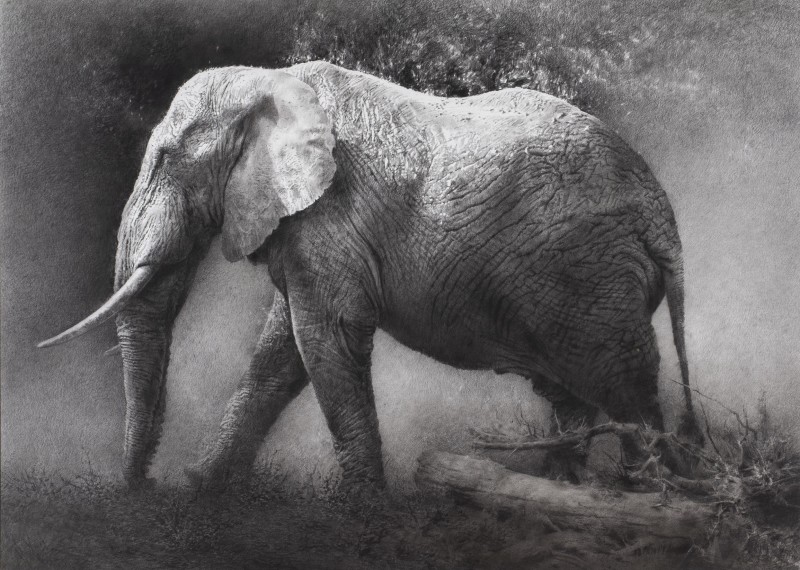 Paul EmsleyElephant, 2005Chalk on paper97 x 137 cm%3Cdiv%20class%3D%22artist%22%3E%3Cspan%20class%3D%22artist%22%3E%3Cstrong%3EPaul%20Emsley%3C/strong%3E%3C/span%3E%3C/div%3E%0D%3Cdiv%20class%3D%22title%22%3E%3Cem%3EElephant%3C/em%3E%2C%202005%3C/div%3E%0D%3Cdiv%20class%3D%22medium%22%3EChalk%20on%20paper%3C/div%3E%0D%3Cdiv%20class%3D%22dimensions%22%3E97%20x%20137%20cm%3C/div%3E
Paul EmsleyElephant, 2005Chalk on paper97 x 137 cm%3Cdiv%20class%3D%22artist%22%3E%3Cspan%20class%3D%22artist%22%3E%3Cstrong%3EPaul%20Emsley%3C/strong%3E%3C/span%3E%3C/div%3E%0D%3Cdiv%20class%3D%22title%22%3E%3Cem%3EElephant%3C/em%3E%2C%202005%3C/div%3E%0D%3Cdiv%20class%3D%22medium%22%3EChalk%20on%20paper%3C/div%3E%0D%3Cdiv%20class%3D%22dimensions%22%3E97%20x%20137%20cm%3C/div%3E -
 Paul EmsleyLion, 2005Chalk on paper76 x 149 cm%3Cdiv%20class%3D%22artist%22%3E%3Cspan%20class%3D%22artist%22%3E%3Cstrong%3EPaul%20Emsley%3C/strong%3E%3C/span%3E%3C/div%3E%0D%3Cdiv%20class%3D%22title%22%3E%3Cem%3ELion%3C/em%3E%2C%202005%3C/div%3E%0D%3Cdiv%20class%3D%22medium%22%3EChalk%20on%20paper%3C/div%3E%0D%3Cdiv%20class%3D%22dimensions%22%3E76%20x%20149%20cm%3C/div%3E
Paul EmsleyLion, 2005Chalk on paper76 x 149 cm%3Cdiv%20class%3D%22artist%22%3E%3Cspan%20class%3D%22artist%22%3E%3Cstrong%3EPaul%20Emsley%3C/strong%3E%3C/span%3E%3C/div%3E%0D%3Cdiv%20class%3D%22title%22%3E%3Cem%3ELion%3C/em%3E%2C%202005%3C/div%3E%0D%3Cdiv%20class%3D%22medium%22%3EChalk%20on%20paper%3C/div%3E%0D%3Cdiv%20class%3D%22dimensions%22%3E76%20x%20149%20cm%3C/div%3E




